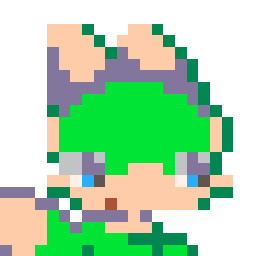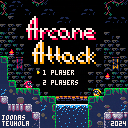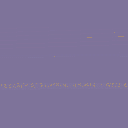One of the simple examples in the LUA documentation for metamethods is to implement set logic on tables.
s1+s2 returns a new set that is the union of the two by defining __add, s1*s2 returns the intersection thanks to __mul, so far so good.
There is also the very useful __index and __newindex to handle reads and writes to unassigned indexes of the table, but the very important assignation metamethod at table level seem to silently not exist, as if it were of no use.
when I do
set1=set2
followed by
set2=set2+{new_elem}
I most certainly didn't mean for set1 to be changed.
There's of course plenty ow ways to force the behavior I wanted :
set1=set2+{}
would work.
We could define a set_copy function
set1=set_copy(s2)
But there seem to be no way to override the assignation behavior, like we would redefine the = operator of a class in C++ for example.
Could someone please shed some light on the subject ? What is the reason behind this omission ?



I created a clone of Worms, the dueling battle game! The game includes three battle maps, set in different terrains. The players can select different spells that consume different amounts of mana.
AI isn't implemented for the second player yet, so when selecting:
- '1 player', both characters will be controlled by controller 1
- '2 players', characters are controlled by different controllers
Controls:
- left / right - move
- up / down - select spell
- x - jump
- o - fire
Version 1.0
- no AI for 2nd player
- missing music




How to play ?
Use your mouse and left click to drag the "space things" around ! Your goal is to destroy all of them by dropping them in the black hole.
What is this game ?
This game was created for the Lame Game Jam (September 20th 2024 to September 23rd 2024). The theme was “Chaos”. I wanted to do something with cats, creatures of pure chaos, so I thought maybe a space cat could be interesting. My boyfriend gave my the gameplay idea. It only took a couple of hours. I used Pico8, my default engine, but I used for the first time the mouse. That's why it's not perfect, but it's fine.
Where to find me ?

Hello, an Android App named "P8GO" has appeared. It's been making the rounds in retro handheld communities because it allows to play Pico-8 games (with a splore-like function) in Android systems, something that we have been lacking.
However, I have doubts about this app. It looks like all it does is be a web container for lexaloffle. But there doesn't seem to be any affiliation between the author and lexaloffle. It doesn't seem to have ads of any sort, but it does have a required login after you play a few games.
Basically, what I am asking is: Is this cool to use? Are we cool?
Outside of those concerns, it's a very good experience as an app. Of course, Pico 8 games are a great thing to play and it has a swipe feature to quickly switch between games.

Please read all of this. It'll only take a minute and it'll teach you how to use this cart.
The ultimate cake factory!
Build your own production line! You can use conveyor belts, springs, antigravity zones, and more!
How to get started:
open the cart file in your pico-8 editor. (Sadly, an in-game editor has not yet been implemented in this version). Go to the map editor! To summon cakes, place a green dispenser. To move the cakes, use various tools to build a path, such as conveyor belts, springs, and antigravity zones. Once a cake finishes its journey, the only way to delete it is to drop it out of the world.
THINGS TO NOTE:
-To turn off the 3D map, change MAP_3D in the _INIT() function to FALSE.


Hi, I was challenged to make a game in a week, so here we are. I may have just used Slepi a retxture of Jelpi so half the code (plat former part) is all of Zeps code, since I had to cram a lot in such a short amount of time. Sadly due to having a week I only made 1 music for the plat former part no background for the "kill owl" and "boil owl" sections of the game (Ps in the "boil owl part there are invisible walls I did not have time to get rid of them since I was rushing, sorry for that)

In VHS Vault: Sokoban Sepulcher, work is a nightmare. Welcome to the graveyard shift!
Lit only by flickering TVs and neon red exit signs, putting away tapes isn't just your job... it's your doom! As the static clears, you realize that you're not alone. Classic monsters crawl out of the displays to hunt you down in this puzzlehouse of terror!
Overcome fiendish sokoban challenges while dodging dimly lit horrors lurking among the shelves. Will you be quick enough to pop in the final tape and escape before they close in... or will you star in a gruesome finale?
At the VHS Vault, you can rewind the tapes - but not your fate!
Made in collaboration with my friends Andy (who is responsible for all the amazing art) and Jimch (programmer, game designer, and puzzle game stan) for the Scream TV game jam. Music by the wonderful @Gruber. The technique for dynamic lighting came from @krajzeg's great writeup. Much level design inspiration was taken from David W. Skinner's Microban puzzles.


V0.3
Overview
This is a sequencer that plays sounds from a waveform memory mechanism through PCM.
It achieves several things that could not be done with the Pico-8 standard tracker.
Operation
Mainly mouse operations.
When you press a key on the keyboard, it makes a sound
Basic screen
- Channel tab: Left click to select, mouse wheel to mute/unmute.
- Channel panel: Mouse wheel to adjust sequence speed (0-63), left click to open view.
- Space bar to play track.
- Press and hold enter to open the menu.
Effect view

A dark storm is looming over the forest. Only you can help our hero cat escape from the rising flood waters that threaten the land.
Catreeboard is a typing game that helps players practice their typing skills. By successfully typing words on the next branch, the cat will jump in an attempt to avoid rising flood waters.
Keyboard is required to play. Does not work with a controller.


Features
- Chill mode for beginning typers to get the basics.
- Challenge mode to test the fastest of typers, beware the storm!
- Customize your cat! Select your favorite color for your adventuring cat.

.jpg)


A simple graphical demo for the PICO-1K Jam 2024 which creates an animated pattern similar to the spiral pattern that seeds in a sunflower make.
I'd played around with this in lockdown using Java libGDX and decided to port it to PICO-8 for the 1K jam.
You can use the left and right arrows to change the radius of the dots.
The compressed byte size of the cartridge is 312. I've made little effort to save bytes because the program is so simple in the first place.
-- sunflower
-- by retroredge,v0.1,2024
function _init()
n=0
f=0.618
d=0.00002
r=1
end
function _draw()
cls()
for i=1,n do
local l=i/n
local a=(3.14*f*i)
local x=(l*cos(a))*64
local y=(l*sin(a))*64
circfill((64)+x,(64)+y,r,c(i))
end
end
function _update()
if (n<501) n+=1
f=f+d
if (btnp(⬅️) and r>0) r-=1
if (btnp(➡️) and r<11) r+=1
end
function c(i)
if i%3==0 then
return 10
elseif i%5==0 then
return 11
elseif i%7==0 then
return 8
else
return 12
end
end |







 3 comments
3 comments
































